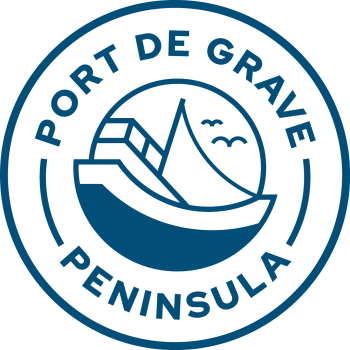Taken from Decks Awash
ISSN 0317-7076
Volume 15, Number 2
March· April 1986
The name, Bareneed. was already in existence in the 1700s, but there has been controversy over its origin. M.F. Howley suggested in 1907 that immigrants from the
West Country of England would pronounce Barren Head as Bareneed, and missionaries in the 18505 attributed the same name to the barren nature of the area. Many people outside the area, however, thought it referred to poverty and difficulty of life in the community, despite the obvious prosperity of the thriving fishing centre. The most likely explanation, also first proposed by Howley, is that the name came from a mortgage deed bequeathed by Jacob Snow to his son John in 1787 which mentions Bearing Head. This deed was registered in 1807 as a transfer from John Snow to Hunter and Company. E.R.
Seary suggests that the prominent local headland may have served as a navigational aid to Port de Grave sailors.
Bareneed is not separated from Port de Grave in reports before 1800, but it was likely settled in the late 1600s by English fishermen, first on a seasonal and then year-round basis. The settlement became more important as fishing activity increased on the Port de Grave Peninsula in the 1700s. William and Elias Picco, two brothers from Jersey. moved from Port de Grave to Bareneed in 1783.
The first church was built before 1816 and the first schoolmaster was appointed in 1822. when the population was 350. Bishop Inglis of Nova Scotia consecrated St. Mark’s Church of England church in 1827 during one of his tours. He also mentioned that the community already had a large Methodist congregation. The Roman Catholic congregation was never large, reaching a peak of 90 in 1836, although numbers in the early 1800s may have been higher before North River was settled. A Church of England school in 1832 listed 86 day pupils, 113 Sunday school pupils and 56 adult students. By 1836 the population was 394 and adjoining Sandy Cove added another 38 residents. Three years later nearly all the community’s children were in the local Sunday school which had over 100 children.
A Protestant school at the Dock, which is now Coley’s Point South, had a total of 22 pupils in 1855 and the Newfoundland School Society had 107 pupils listed for its school in Bareneed the same year. By 1857 Bareneed itself had 432 inhabitants and the adjoining areas of Sandy Cove, Long Beach and the Dock added another 363. A Roman Catholic school had been built and a new Church of England church was built by Lhe inhabitants
in 1860.
The community’s prosperity was based on the inshore cod fishery and the good anchorage in its small, protected harbor close to prime fishing areas. The seal fishery,
however, brought the greatest growth and progress to Bareneed. By 1857, six large vessels sailed to Labrador and Bareneed’s catch of 20,000 seals that year was second
only to that of Brigus. Four merchant planters were listed in Hutchinson’s Newfoundland Directory in 1864: Benjamin Batten, Thomas Batten, Richard Hennebury and Thomas Richards.
In 1884, 82 Bareneed men went to Labrador and a new Church of England school was built. Richard Hennebury and Richard Newell, two planters, and Samuel Moore, a merchant, all lived in Bareneed and owned schooners. The 34-ton St. Patrick was lost in the Bareneed area in November 1880. Samuel Moore’s vessel was the 72-ton Alice M, which was lost in the same area in November 1890. By 1891 the Dock was no longer listed and Bareneed had a total of 131 fishermen in residence, and six vessels were engaged in the Bank fishery.
While the 18005 were a time of growth, the 1900s were marked by a rapid decline in the population from 410 in 1901 to 291 in 1921 as new industry, particularly the mines
on Bell Island and the railway, drew workers away. The decline in the Labrador fishery brought a further drop to In residents by the 19305. A few members of the Salvation
Army lived in both Bareneed and the Dock from the early 1900s, but by 1921 only the Church of England and Methodist churches had enough pupils to maintain schools.
One of Bareneed’s most famous residents was Herman Batten, born in the community in 1909, who after 30 years as a teacher entered federal politics and was appointed
Deputy Speaker and Chairman of Committees of the House of Commons in 1965. The development of the community continued to lag behind those on the Port de Grave Peninsula until a breakwater was built in 1970 and a fishplant opened in 1972 provided local jobs. In 1981 the plant processed 5 million pounds of crab, together with some caplin and cod. The community also had a music centre attached to the museum in Hibbs Cove in the 1970s. An increasing number of local residents now are employed in the service sector as the fishery has declined.
Women form a high proportion of the work force, mainly in fish processing and clerical jobs, and continue to play the important role R.A. Parsons noted in the 1950s.
Her industry, her courage, and the care, She constant gives to light and colour here,
Dispel discouragement, proscribe despair. No lesser woman may sustain as she
The settlement throughout its infancy.
-from Salute to Port de Grave by R.A. Parsons, published
in 1975, used with permission.

